Past Retreats: 2014 Speaker Profiles
Tenth Annual Keynote Address
Eric Wieschaus, Ph.D.
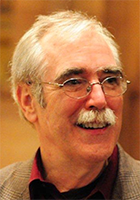
In the late 1970s, Eric Wieschaus and Christiane Nüsslein-Volhard carried out large-scale mutagenesis screens to identify genes controlling embryonic development in Drosophila. In contrast to previous genetic analyses, these screens were designed for genomic saturation, i.e.; identifying key components in all pathways govern gross morphology, patterning and differentiation. These experiments established a basic “tool box” of maternal factors and signaling pathways that operate in the Drosophila embryo and are in fact conserved with remarkable fidelity in all multicellular organisms. Mutations in the associated genes account for a significant fraction of inherited birth defects in humans and play a major role in cancer. Wieschaus and collaborators then went on to elucidate basic features of the Wnt pathway, showing for example, that Wnt signaling modulates levels and nuclear localization of beta-catenin (=Armadillo) and investigating the role of GSK3b and APC in that process. More recent work has focused on the cell biological mechanisms that control cell shape change and movement during gastrulation, and on quantitative biophysical measurements of morphogen gradients during early development. Wieschaus is a Professor of Molecular Biology at Princeton University, an HHMI investigator, a member of the National Academy of Sciences (USA), a foreign member of the Max Planck Society, and the 1995 Nobel Laureate for Medicine.
Career Keynote Address
Sherri Bale, Ph.D.
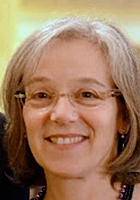
Dr. Sherri Bale received her BA in Biology from Clark University, her M.S. and Ph.D. degrees from the University of Pittsburgh, and did her postdoctoral training in medical genetics at NIH. She is an ABMG Board-Certified Ph.D.- Medical Geneticist and Founding Member of the American College of Medical Genetics, served on the ACMG Professional Practice and Guidelines Committee, the ACMG Foundation Committee, the Corporate Responsibility Task Force, co-chaired the Whole Exome//Genome Sequencing Task Force, and works with the Laboratory Practice Committee and the Incidental Findings workgroups of both ACMG and AMP. She is a consultant to various academic, federal, and private organizations regarding clinical, technical, and regulatory issues in genetics and genetic testing. She co-founded GeneDx in 2000 after 16 years at the National Institutes of Health as Senior Staff Fellow, and then a Section Head. GeneDx was acquired by BioReference Laboratories, Inc. in 2006. Dr. Bale served as President and Clinical Director of GeneDx until 2011, and then became Managing Director of GeneDx and Sr. Vice President of BioReference Laboratories. The company specializes in developing and providing molecular diagnostic tests for hereditary genetic disease using innovative methods. Dr. Bale has authored 140 peer-reviewed papers, practice guidelines, book chapters, and books in the field of genetics. She serves as President of the Board of Directors of an international adoption agency that specializes in placing older and special needs children. She also holds a second degree black belt in judo.
NICHD Scientific Updates
Jennifer Lippincott-Schwartz, Ph.D.
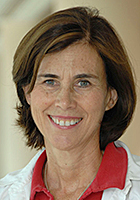
Dr. Jennifer Lippincott-Schwartz is Section Chief of the Cell Biology and Metabolism Program of NICHD and is an NIH Distinguished Investigator. Dr. Lippincott-Schwartz’s lab develops and applies light microscopy approaches, such as photoactivatable fluorescence imaging and super-resolution light microscopy, to study biological systems quantitatively. She has pioneered the use of photoactivatable green fluorescent protein (GFP) to visualize the dynamic activity of discrete protein populations in live cells. Together with Dr. Eric Betzig, she developed the superresolution fluorescence microscopy method of PALM, which breaks the diffraction limit and allows fluorescence imaging with nanometer-scale resolution. Her lab applies this high resolution imaging method to investigate the nanoscale distribution and activity of single molecules in their native cellular environment. Dr. Lippincott-Schwartz received her BA from Swarthmore College and her PhD degree in Biology from the Johns Hopkins University. She is a member of the National Academy of Sciences (NAS) and also a member of the Institute of Medicine of the NAS. For her pioneering work, she has received numerous honors, including the Royal Microscopy Society Pearse Prize and the Society of Histochemistry Feuglen Prize. Dr. Lippincott-Schwartz is President Elect of the American Society of Cell Biology for 2014. She currently serves on the scientific advisory boards of the Howard Hughes Medical Institute, the Weizmann Institute of Sciences, the Searle Scholar Program, and the Salk Institute.
Joan Marini, M.D., Ph.D.
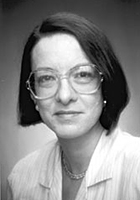
Joan Marini, M.D., Ph.D., is Chief of the Bone and Extracellular Matrix Branch of NICHD. She leads the Osteogenesis Imperfecta (OI) research program, in which clinical and bench research are fully integrated. Her lab generated the Brtl mouse model for type IV OI and has played a leading role in the Consortium for OI mutations. In the last 7 years, her group has been a leader in the exciting new developments about recessive OI, which have revealed important novel findings on the role of collagen prolyl 3-hydroxylation in bone formation.
Dr. Marini received her M.D., Ph.D. in the Medical Scientist Training Program at the Johns Hopkins School of Medicine. She completed training in pediatrics at Johns Hopkins and Georgetown University Hospital. Subsequently, she did Clinical Genetics specialty training at the NIH InterInstitute Genetics Program, and has been awarded the NIH Director’s Award twice for her work on osteogenesis imperfecta.
Career Focus: Round Tables
Smita Abraham, M.D.

Dr. Smita Abraham earned her medical degree from Northeastern Ohio Medical University. She completed her internal medicine residency at Summa Health Systems in Akron, Ohio. After completing an endocrinology fellowship at NIH, she served as a staff clinician, chief of outpatient services of the adult endocrine clinic, and associate program director of the NICHD adult inter-institute endocrinology training program. During her time at NIH, Dr. Abraham also earned her Masters in Health Sciences in Clinical Investigation.
Dr. Abraham’s research interests include pituitary and adrenal disorders, specifically cortisol related disorders and primary hyperaldosteronism. Currently, Dr. Abraham holds a position as a medical officer at the Food and Drug Administration. In her role as a medical officer at FDA, she applies her medical knowledge and research skills to the evaluation and approval process for ensuring safe and effective general endocrine drugs.
Sean Barron, Ph.D.
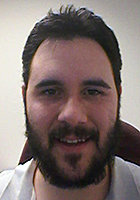
Dr. Sean Barron is currently a patent examiner in Technology Center 1600 (Biotechnology and Organic Chemistry) at the United States Patent and Trademark Office. He examines patent applications related to microbiology, mammalian cell culture, tissue engineering, organic chemistry, and enzymes. From 2010 to 2012, he was a postdoctoral fellow at NICHD in the laboratory of Dr. Chris McBain. His research project focused on hippocampal interneuron development and how that might be disrupted by prenatal nicotine. He earned his Ph.D. degree in 2010 from the University of North Carolina at Chapel Hill in Neurobiology. As a graduate student in the Department of Pharmacology and at NIEHS/NIH, he studied the mechanisms of allosteric modulation of nicotinic acetylcholine receptor. In 2003, he received his B.S. degree in Biology (with a minor/focus in Biochemistry) from James Madison University.
Sydella Blatch, Ph.D.

Dr. Sydella Blatch obtained a Bachelor’s Degree in Biology with a concentration in zoology from the University of Maryland College Park. After briefly teaching high school and working as a lab technician, she earned her Ph.D. in Biology at Arizona State University. There, she began her research on functions of the B-vitamin folic acid in relation to unknown microorganisms in the fruit fly Drosophila melanogaster. During graduate school, Dr. Blatch was the co-president of the Black Graduate Student Association of ASU, worked with the Minority Access to Research Careers Program, and created The Shades Mentoring Program, a campus-wide multicultural mentoring program for undergrad and graduate students in the sciences. Dr. Blatch studied the molecular biology of mouse epigenetics during her postdoctoral training at NICHD in the laboratory of Dr. Karl Pfeifer, and during this time, she also worked as an adjunct faculty member at Howard University and Prince George’s County Community College in Maryland.
After her postdoctoral training, Dr. Blatch accepted her current position as an Assistant Professor of Biology at Stevenson University, where she thoroughly enjoys teaching, research, and service. She teaches courses such as Plant and Animal Form and Function, Cells and Genetics, Human Physiology, Animal Physiology, New Student Seminar. She continues her research with undergraduates on the effects of interactions between dietary B-vitamins and the gut microbiome on growth, development, behavior, and DNA methylation in the fruit fly Drosophila melanogaster. Dr. Blatch enjoys service work for three university committees and two national professional societies.
Megan Janssen-Schroeder, Ph.D.

Dr. Megan Janssen-Schroeder received her bachelor’s degree in biochemistry from Susquehanna University in 2006. She received her Ph.D. in pharmacology from Georgetown University in 2010. As an electrophysiologist, Megan studied dopamine regulation of inhibitory currents in the dorsal striatum. Following a year-long postdoctoral fellowship at Georgetown, she entered the laboratory of Dr. Andres Buonanno as a postdoctoral fellow in 2011. At NICHD, Megan studied how neureglin affects hippocampal inhibitory currents and overall neuronal activity.
In late 2012, Megan accepted a position as a pharmacologist at FDA’s Center for Tobacco Products. There, she primarily writes and reviews regulatory tobacco clinical pharmacology studies, specifically to better understand the role of nicotine addiction in tobacco use.
Dan Sackett, Ph.D.

Dr. Dan Sackett is a Staff Scientist in the Program in Physical Biology at NICHD. He earned his Ph.D. in Biochemical Genetics from Brown University before coming to NIH as a postdoctoral fellow in Clinical Endocrinology. His research interests throughout this period and to this day are centered on mitosis, microtubules, mitochondria, and evolution. Microtubule ordering in cells not only provides the defining scaffold for mitosis but also for generating other asymmetries and the origins of patterns. Microtubules also serve to anchor the network of mitochondria. The many small molecules that target microtubules, in nature and in chemotherapy, have been a significant part of Dr. Sackett’s research.
Dr. Sackett has enjoyed extensive collaboration, with physicists, chemists, biologists, and clinicians. Student interns and fellows have been a constant part of his research, from high school students through postdoctoral fellows and visiting career scientists. This has provided an opportunity for students to see and try combining fields of research in actual laboratory applications.
Shana R. Spindler, Ph.D.
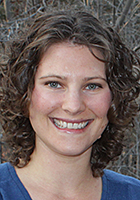
Dr. Shana R. Spindler is a freelance science writer. She completed her B.A in Molecular, Cell, and Developmental Biology at the University of Colorado, Boulder, and her Ph.D. in the same field at the University of California, Los Angeles. Dr. Spindler joined the NICHD in 2009 as a postdoctoral fellow in the lab of Dr. Ajay Chitnis, where she studied cell movement and morphogenesis in the zebrafish lateral line.
Dr. Spindler currently serves as Editor in Chief for The NICHD Connection, a monthly newsletter generated by and for NICHD fellows. In this role, she organizes, edits, and writes articles about NICHD research, career development, and recent events. Dr. Spindler also has a contract with the nonprofit organization MindSpec, where she covers new autism research on a website geared toward the general public.
Silviya Petrova Zustiak, Ph.D.
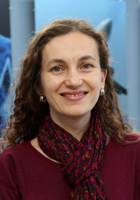
Dr. Silviya Petrova Zustiak, Ph.D. is currently an Assistant Professor in the Department of Biomedical Engineering at Saint Louis University. She obtained a BS/MS degree in Bioelectrical Engineering from Technical University, Sofia, Bulgaria in 2002 and earned her Ph.D. degree in Chemical Engineering from the University of Maryland Baltimore County, in 2009. During her doctoral studies under the guidance of Dr. Jennie Leach, Dr. Zustiak developed hydrogels as scaffolds for neural tissue engineering. Dr. Zustiak conducted postdoctoral research for three years at NICHD in the Laboratory of Integrative and Medical Biophysics under the mentorship of Dr. Ralph Nossal, utilizing spectroscopic techniques to study solute transport within hydrogel matrices.
Dr. Zustiak’s primary research interests are in Hydrogel Biomaterials and Tissue Engineering, with emphasis on developing novel biomaterials as cell scaffolds and drug screening platforms, and elucidating matrix structure-property relationships as well as cell-matrix interactions. This research is highly multidisciplinary, merging the fields of engineering, materials science, and biology.